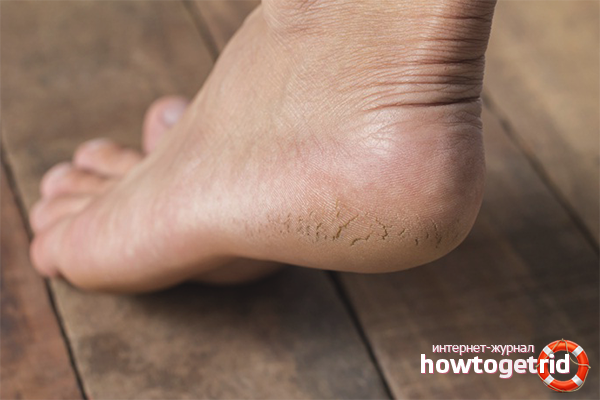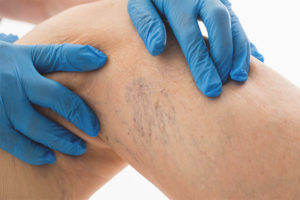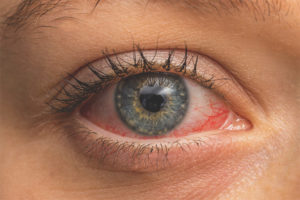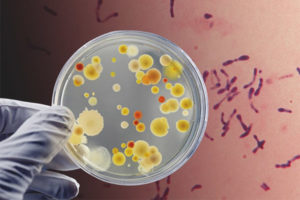The content of the article
Uncomfortable shoes and frequent barefoot walking on hot sand or asphalt are among the main causes of coarsening of the skin on the heels. The upper layer of the epidermis is compacted due to endocrine disorders and digestive tract diseases, lack of vitamins and fungal infection. If the doctor has not found any major changes in the body, the patient is advised to introduce vitamin-rich foods into the diet and try folk remedies for corns and cracks.
Foot softener
If the upper layer of the epidermis has become thick and rough, covered with scales and wounds, daily warm baths will save it. Feet hover in the evenings 30–40 minutes before bedtime. Plants with antiseptic properties are added to the water to soften and disinfect the feet. The list of useful herbs includes:
- elecampane;
- calendula inflorescences;
- oak bark;
- nettle twigs;
- succession;
- chamomile flowers;
- sage;
- St. John's wort
If cracks are caused by a fungal infection, experts recommend elecampane. With increased sweating, oak bark helps. And with inflammation and suppuration of wounds on the feet, camomile and calendula are the best copers.
A bowl of 5–10 L will need about a glass of the drug blank. The plant is first steamed in a thermos, mixing with a small amount of boiling water. And when the broth is infused, and the grass gives all the trace elements and essential oils to the liquid base, a natural medicine is added to the water for the feet. Legs are kept in a disinfectant solution for 10–20 minutes. Softened skin can be massaged with hard brushes, removing the top layer of the roughened epidermis, but do it carefully so as not to damage the cracks.
After steaming, nourishing creams or healing ointments are rubbed into the back of the foot. Be sure to put on thick socks made of natural fabric so that the product is quickly absorbed into the heels, and dirt does not get into softened wounds.
When the first flakes appear, a tub of potato or corn starch helps. The component dries and creates an antiseptic film that protects against fungal infections and germs. A therapeutic solution is prepared from 5 l of warm water and 150-160 g of dry ingredient. The main thing is to thoroughly stir the workpiece so that the starch is dissolved in a liquid base. After the procedure, the feet are rinsed with salted water or chamomile broth, and then moisturize the hardened epidermis with vegetable oils or homemade cream.
Aloe and honey
If the wounds are not too deep, the baths are supplemented with lotions from improvised products. The pain and redness are removed with an aloe mask. The plant juice has anti-inflammatory properties, saturates the heels with vitamins, which stimulate the regeneration of damaged tissues and remove coarsened corns.
Lotions are prepared from a three-year-old plant. Before use, the cut sheet must be placed in the refrigerator for 2 days, so that the workpiece allocates the maximum number of useful trace elements. Aloe, purified from dust, is ground with a meat grinder or knife. With inflamed cracks, the plant is mixed with eucalyptus essential oil and castor oil. For 100 g of the base take 50 ml of the first component and 150 g of the second. It is advisable to whip the mask with a whisk so that the products mix well.
If the cracks are shallow, in 1 tsp. Aloe is injected with egg white. The composition is kept on feet for 20 minutes and washed off with cool water.
Heels covered with scales from keratinized skin, lubricated with vegetable oils. Any one found in a closet or cosmetic bag will do:
- sunflower;
- Coconut
- apricot;
- flaxseed;
- corn;
- almond;
- olive.
Lotions of vegetable oils nourish coarsened tissues and soften, but they are contraindicated in deep cracks. Fatty formulations, even natural ones, create a film on the wounds that interferes with healing and increase the risk of infection.
The basis for a moisturizing lotion is heated in a water bath to 45-50 degrees. A gauze or cotton piece is moistened in warm oil and squeezed slightly. Wrap coarse areas covered with scales, and fix on the foot with cling film. From above, thick socks are necessarily put on and go to bed with an oil mask. In the morning, wash it off with soapy water, rinse with a soothing broth and rub the healing cream into the cracked skin.
Honey helps cure heels. The bee product is mixed in equal proportions with fat cottage cheese and sour cream, beat into a homogeneous mass. Spread a sour milk mask on the heels and put on plastic bags. The feet before the procedure are recommended to be steamed and lightly treated with pumice to soften the upper layer of the epidermis.
If cracks begin to become inflamed, a mixture of honey and sea salt can stop the process. Both components have antiseptic properties. The scrub mask is applied in a thick layer, the legs are wrapped in plastic bags and socks. Wash off the honey medicine in the morning, gently massaging the coarse heels. And then a cream with vitamin E is rubbed into the damaged areas. Before using salt scrub, the feet are advised to steam in warm serum. It will saturate the skin with fermented acid and dissolve the coarse epidermis.
Alcohol, dried fruits and cabbage
As soon as the first symptoms of cracks appear, a mask of potatoes is prepared to treat the heels. Tubers peeled from the earth are boiled in a small amount of water. The peel from the workpiece does not need to be peeled off; it contains many trace elements and starch. The boiled potatoes are kneaded together with the remaining water and poured into a bowl until the mass has cooled.
The mask is seasoned with 1 tbsp. l soda and stir. If the puree is too hot, it is diluted with cold water. Feet are dipped in potatoes until completely cooled. The remaining mashed potatoes are washed off with chamomile broth and the result is fixed with a lotion of vodka.
Alcohol is heated to 38–40 degrees. They impregnate linen cloths with vodka or moonshine and wind them with cling film. In the morning, the skin is rinsed with warm water and a healing agent is rubbed into the coarsened areas of the feet.
Large cracks that hurt and interfere with walking are treated with prunes. A few dried fruits are soaked in hot milk. The swollen pieces are fixed on the feet with bandages, wrapped in bags, and on top - thick socks. Prunes compress removes cracks and softens the upper layer of the epidermis in 6–7 days.
Inflamed feet are treated with gruel from cabbage leaves and bulbs. Grind products, season 1–2 tbsp. l honey and smeared with a thick layer on damaged heels. The composition disinfects, draws out pus and restores the epidermis. Moisturizes and softens at the same time. Before the onion-cabbage compress, the feet soar in a bath of herbs or soda.
In summer, cracks are treated with fresh tomatoes. Apply tomato slices to the damaged areas and leave for 3-4 hours. Tomato paste or juice from the store will not work. Products with preservatives and additives only worsen the condition of the skin on the feet.
Dairy formulations and fat
People with honey allergies are advised to replace it with blue clay. The powder is combined with warm water and a mask is prepared with a creamy consistency. With inflammation, add eucalyptus, lemon and orange essential oil or calendula alcohol tincture to disinfect wounds. The clay is kept to dry, and then washed off with salted water.
Feet covered with scales and cracks will save fish oil. The product contains vitamins that trigger the regeneration of soft tissues and moisturizes the epidermis.The workpiece is heated to a pleasant temperature, and then gauze swabs are moistened in the medicine. They are wrapped in bandages to the affected areas and go to bed without removing the compress.
Healing properties have yogurt. The mask consists of 120 ml of fermented milk drink and 30 g of melted butter. The ingredients are whipped, and if the workpiece is too liquid, it is thickened with oatmeal flour or rye bread. The balm is applied to the heels for 40 minutes. And the procedure is completed by rubbing the oily cream into coarsened feet.
The skin will become smooth and tender, like a baby, thanks to oatmeal. Thick porridge is cooked from it and seasoned with linseed oil. The warm mass is divided into 2 servings and transferred to plastic bags into which feet are thrust. Oat “socks” are removed after 1.5 hours.
Cracks can be removed in 5–7 days by a mask that includes:
- fish fat;
- aloe juice;
- wheat or corn flour;
- onion juice.
Liquid ingredients are combined in equal proportions. And they take so much flour to make a creamy pasta. Onion composition is rubbed into the feet before bedtime. Put on a cocoon of plastic bags and terry socks. In the morning, the antiseptic mask is washed off, the heels are wiped dry and zinc ointment is applied to the damaged areas. It quickly heals cracks and softens coarsened areas.
Wax and Laundry Soap
If the heels are covered with corns, scales from rough skin and small wounds, ordinary aspirin will correct the situation. From 10 tablets and water make a creamy gruel, season it with 1 tsp. lemon juice and impregnated with the composition of the problem areas. Keep under the plastic wrap for 3-4 hours, and then soar the feet in a herbal broth and treat with fine-grained pumice.
If the cracks do not heal for a long time, the heels are lubricated with a mask of beeswax, paraffin and salicylic acid. The solid components are mixed in equal proportions and heated in a steam bath, stirred until smooth and the alcohol solution is poured. A warm mask is applied to clean feet with a brush. When the first layer is dry, the legs are covered with a second and third. A thick waxy film should be formed, which is left for a day. Wax means is wrapped with bandages and cellophane. After 24 hours, the mask is removed, and a warm bath with baking soda and sea salt is prepared for the heels. The upper layer of the coarsened epidermis is removed with a pumice, and after the procedure a softening cream is applied.
Feet covered with small cracks are rubbed with gruel from laundry soap before bedtime. If the skin is sensitive, the cosmetic product is replaced with a paste of fresh apple or green leaves of celandine. Only a plant is poured with boiling water before use.
Cracks on the heels are treated comprehensively. Masks made of honey and fish oil complement a balanced diet. Products containing retinol and tocopherol are introduced into the menu:
- beef and pork liver;
- green onions;
- chicken and quail eggs;
- butter;
- carrot and cabbage salad;
- buckwheat;
- Rye bread;
- parsley;
- cottage cheese;
- blackcurrant;
- leaf salad;
- peas.
Nutritious masks, lotions and creams help get rid of cracks in the heels. Regeneration of damaged areas accelerates a balanced diet. And so that the problem does not recur, you need to choose comfortable shoes, wear tights and socks made of natural fabrics and regularly take care of your feet, without neglecting pumice, scrubs and other cosmetics.
Video: a super remedy for cracking the heels










Submit